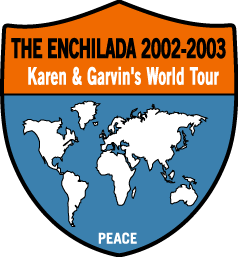|
FIRST WORLD CITY, THIRD WORLD PRICES
We arrived in Buenos Aires, Argentina with no idea of how we were going to spend our time
in South America. We had three months, the last three months of The Enchilada at that, to explore the continent. The pressure
was on.
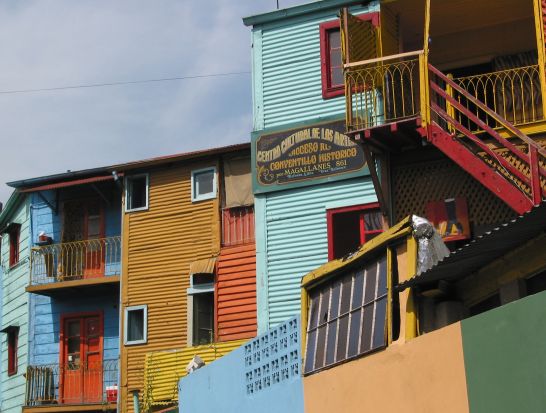
|
| Buenos Aires, Argentina |
Buenos Aires is a grand city. From the people to the parks and all the plazas
in between, Buenos Aires feels more European than Latin American. The only major difference is the price. Due to an economic
crisis which has severely crippled the Argentinean economy over the past three years, we were able to eat and drink like kings. What was once 1 peso to 1 US dollar is now 3 pesos to the dollar. That meant we could
go to just about any restaurant we wanted, order a full dinner with drinks and dessert and be hard pressed to spend more that
$10. Needless to say our pants were a little tight around the waist on our way out of the city.
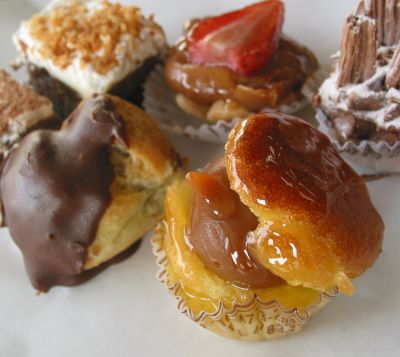
|
| Buenos Aires, Argentina |
In spite of the economic crisis, the Argentineans have not lost their passion for food and
culture. In fact we had a hard time keeping up. Often times, we would find ourselves dining alone in restaurants. This was
not because no one was eating out, but rather the Argentineans dont START a night out until 9:30 or 10:00 (closer to our bedtime
than dinnertime). The night is long and lively in Buenos Aires.
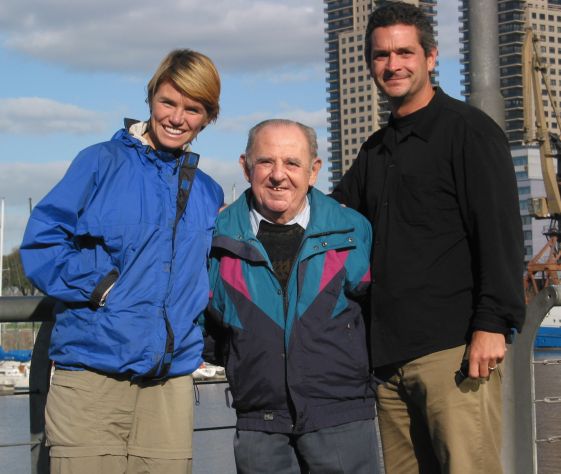
|
| Buenos Aires, Argentina |
We were fortunate to have wonderful hosts in the city through Servas. The Felner/Zelzman
family not only helped us to plan our route in South America, but David, our host's father, gave us a very personal tour of
Buenos Aires' beauty, history and culture. We had a wonderful day.
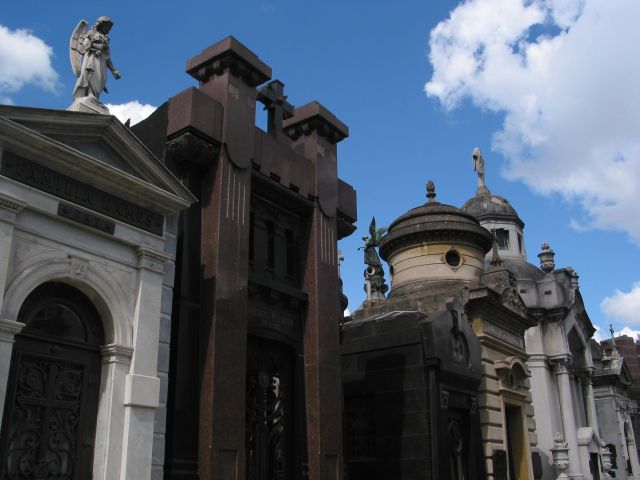
|
| Buenos Aires, Argentina |
David's tour supplemented our own, which included visits to: La Boca, a colorful seaside neighborhood
rich with maritime history (the homes were originally painted with left-over ship paint); the Recoleta cemetery (where the
rich and famous are buried, including Eva Peron); and the world renowned Theatre Colon, Buenos Aires' opera house where Karen
was fortunate to see one of Argentina's foremost pianists rehearsing for a concert.
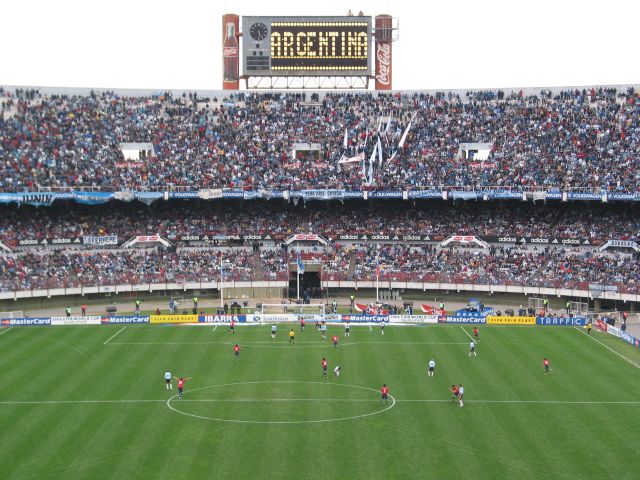
|
| Buenos Aires, Argentina |
A
trip to Argentina would not be complete, though, without experiencing the country's favorite obsession: futbol. With
our three dollar tickets we stood amongst the most passionate of fans and watched Chile demonstrate strength Argentina
was not ready for during a World Cup qualifyer. The game was a tie, but the Argentineans were not happy to say the least with
La Selection's performance. To give you an idea of just how passionate the
fans are about these games, the Chilean fans were asked to remain in their seats for a full half hour after the game was over
... for their own safety.
EMPANADA INFATUATION
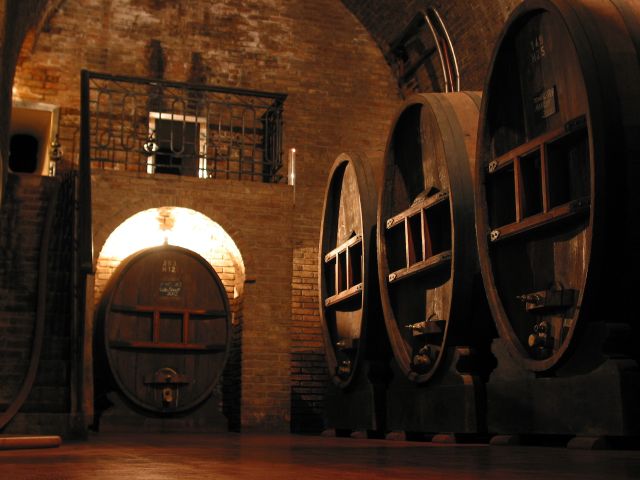
|
| Mendoza, Argentina |
As nice as Buenos Aires
was, after a week or so, we were eager to get into the countryside and see a different part of Argentina. Our route first
took us west to the city of Mendoza. Known for its trees and wines, Mendoza is a great place for a weekend getaway. We tasted
the wines and appreciated the trees, but it was another Servas host who made our visit so memorable. Rolando, his daughter
Jeri, and their friend Luci made us feel right at home and clued us in to some of their favorite fun spots (like the late-night,
steak-sandwich-is-the-only-thing-on-the-menu, cool people hang-out).
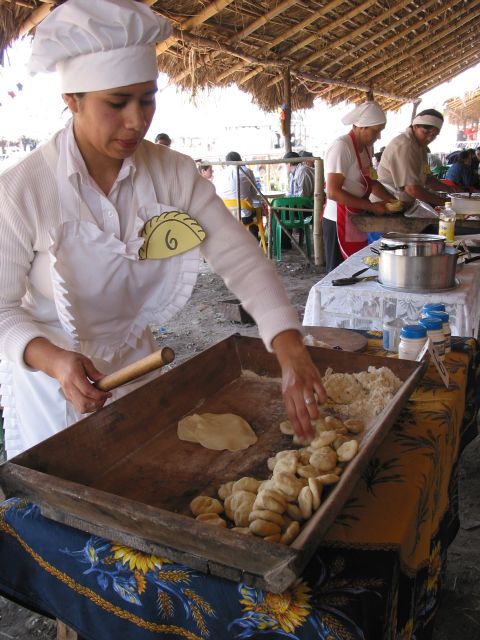
|
| Famailla, Argentina |
From Mendoza, it was
north to the city of San Miguel de Tucuman. The highlight of our visit though actually took place in the nearby small
village of Famailla. There we stumbled across an empanada festival where the national champion was to be crowned.
This is serious stuff! As we watched the contestants chop, dice, roll, fold, and bake their creations we filled up on empanadas
from past champions. After all, if we were ever going to know what a REAL empanada tasted like, this was the place.
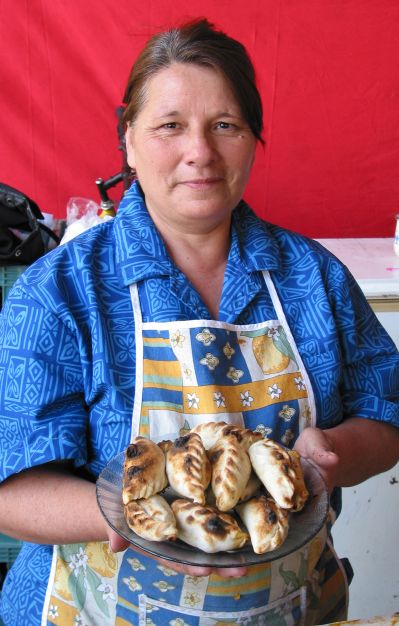
|
| Famailla, Argentina |
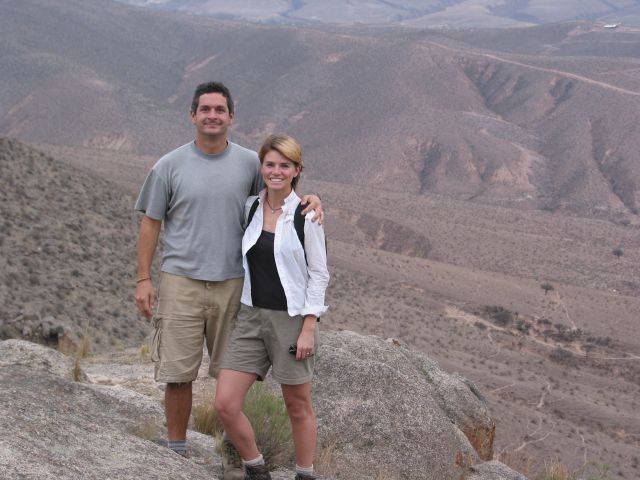
|
| Tafi del Valle, Argentina |
On September 22, 2003, our second wedding anniversary,
we arrived in the quaint town of Tafi de Valle, our first real pueblo experience. We celebrated our special day with a hike to the top of one of the town's
highest mountain and watched the sunset. We've vowed to celebrate each anniversary from here on out with a hike ... it's more
romantic than you think!
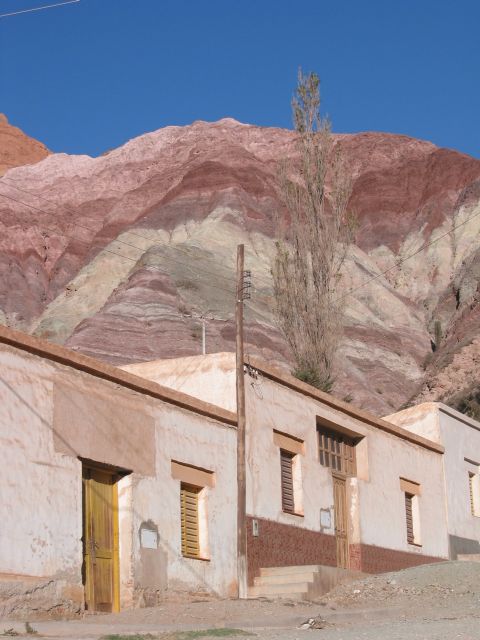
|
| Purmamarca, Argentina |
As we worked our way north toward the Bolivian border, we passed through a number of quaint villages, many of which are very
well preserved. You could really imagine what some of these places looked like before there were cars and, well, tourists.
At times we felt as if we were the only people in a town, while at other times we were caught up in the hustle and bustle
of the local markets. The scenery was beautiful. The mineral rich mountains in northern Argentina make a spectacular backdrop
for any activity. In one town we hiked to get a closer look at the colorful mountains. Our guide was very friendly and spoke
good English. After our hike, we were invited back to his boss's house for lunch. His boss was the director of tourism. How
nice is that?
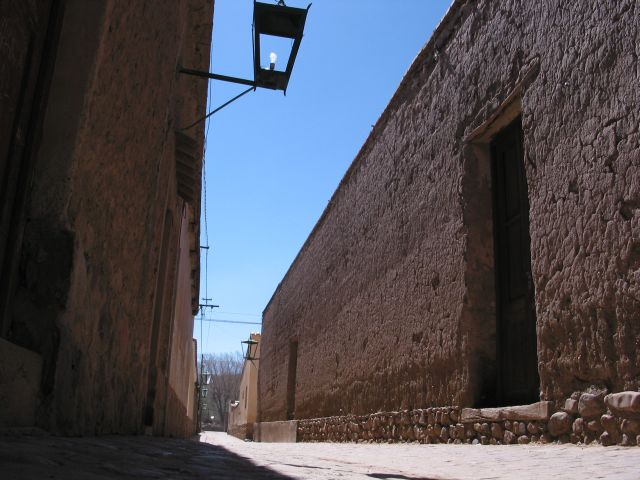
|
| Humahuarca, Argentina |
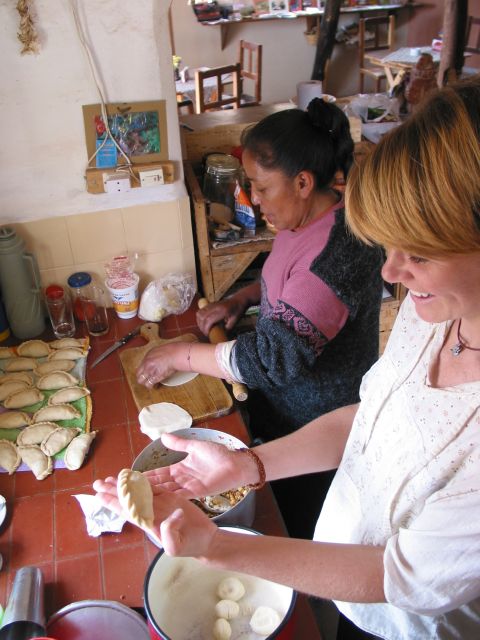
|
| Humahuarca, Argentina |
Before crossing into Bolivia, we stopped in the town of Humahuaca. We had the idea that, if
possible, we should learn how to make empanadas before leaving the country. The hosts at our guesthouse arranged for
a local woman, Irma, to spend a day teaching us how the best empanadas are made. Irma was a lovely teacher. We watched
as she shelled the fresh peas, chopped the onions and kneaded the handmade dough with the ease that comes with years
of experience. It wasn't only fun, it was really yummy!
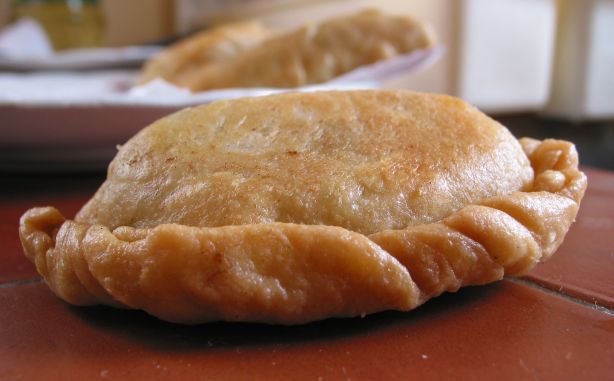
|
| Humahuarca, Argentina |
DOES THIS MAKE
US "SUCRETS?"
One thing we had been blessed with in South America was a lot of time. We had
almost three months to play with and were looking for a way to take advantage of it.
We had been hoping for an opportunity to do some volunteer work during our year
away and this seemed to be the best time. But, we soon realized that to get the most out of volunteering, we would need
to learn more Spanish (as in Karen's case) or any Spanish at all (as in Garvin's case).
We did our research and found a program in Sucre, Bolivia that fit our needs (and our budget).
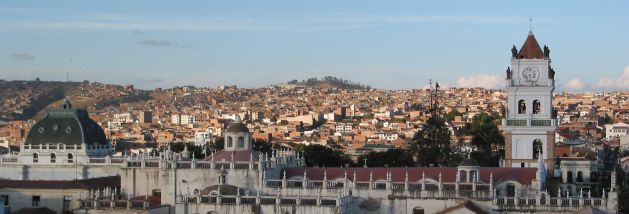
|
| Sucre, Bolivia |
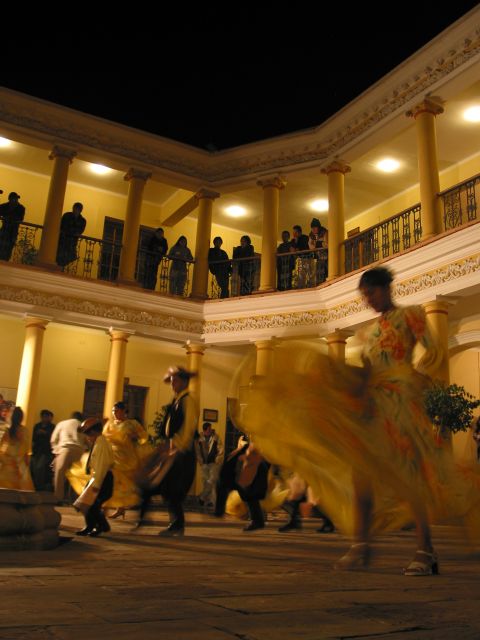
|
| Sucre, Bolivia |
Sucre, as its residents are quick to remind anybody, is the official capital of
Bolivia, even if all the government offices with the exception of the Supreme Court long ago moved to the biggest city, La
Paz. Its nickname is "The White City of the Americas" and Sucre is a beautiful, remarkably well preserved city filled with
block after block of white-washed Spanish colonial architecture.
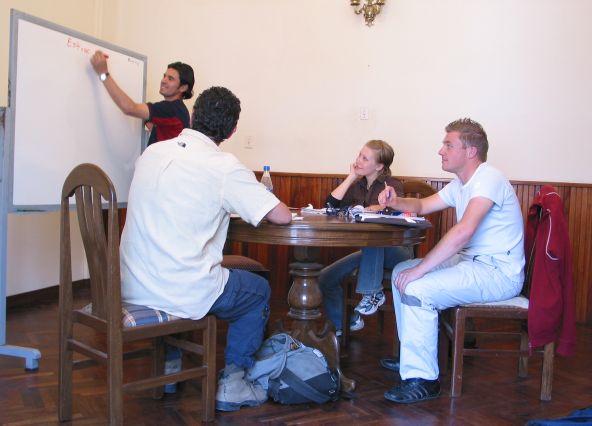
|
| Sucre, Bolivia |
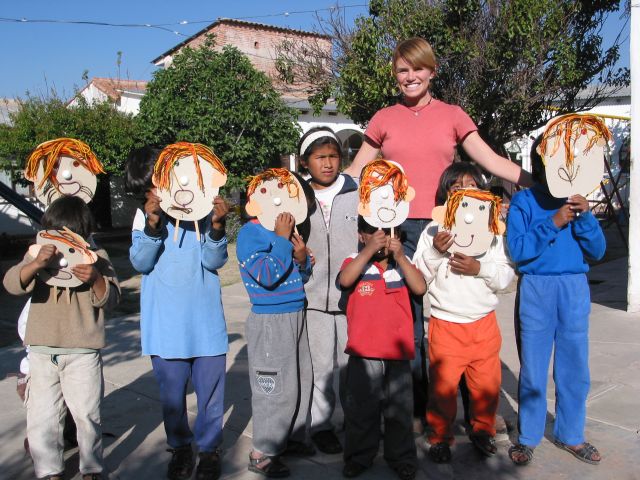
|
| Sucre, Bolivia |
Our school was located in downtown Sucre and we attended classes four hours a day, five days a week, for four weeks. The program
also arranged housing for the month with a local family. The Inclans were wonderful to us and provided us with some of the
best home cooked meals we have eaten on The Enchilada. Karen
also fulfilled her volunteer wishes by helping out three days a week at a rehabilitation clinic for children with visual impairments.
"GONI, CABRON,
BOLIVIA NO TE QUIERE!"
(Goni, you bastard, Bolivia doesn't want you!)
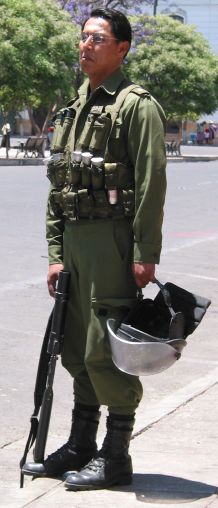
|
| Sucre, Bolivia |
While it was our intention to just get lessons in the Spanish language, we were destined during our time in Bolivia
to get quite an education in Latin American politics for no extra charge as well. The month of October saw
a revolution of sorts in Bolivia, which ended only when the president fled the country.
It started as a controversy about President Gonzalo
"Goni" Sanchez de Lozada's plans to export Bolivia's natural gas resources via Chile to the United States and Mexico. Country-wide,
protestors blocked almost all major roads (it was impossible for us to leave Sucre by land if we had wanted to), while in
La Paz things went even further. Clashes between police and protestors resulted in the deaths of more than eighty people.
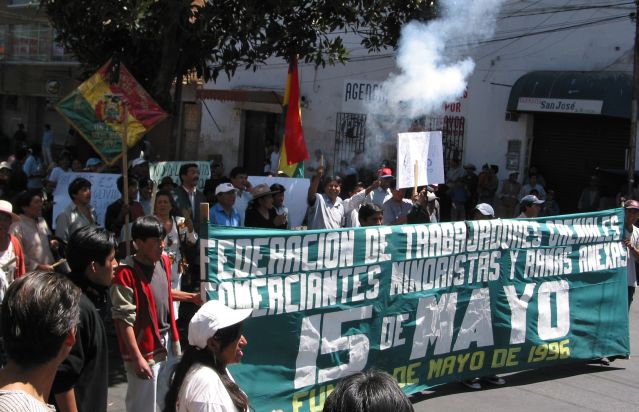
|
| Sucre, Bolivia |
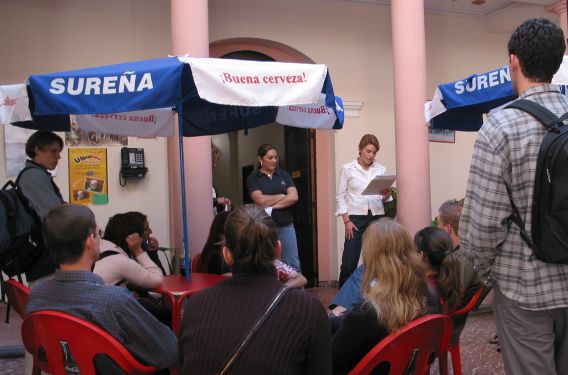
|
| Sucre, Bolivia |
In
Sucre, there were only a few marches (and just a little tear gas) and we never felt in danger while there. However, the United
States Department of State decided things were bad enough in the country to urge American citizens to leave as soon as possible
(as the broadcast journalists-in-residence at the school, we were pressed into service to deliver the news to our classmates).
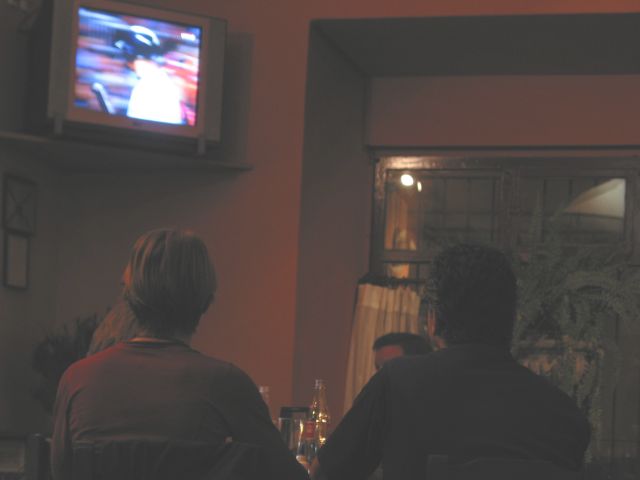
|
| Sucre, Bolivia |
We took their warning seriously, but seeing as it came just before game seven of the Red Sox-Yankees series, and we
had a place to watch the game, we weren't going anywhere just yet. Turns out, however, the next day the president, fearing
for his life, fled to the United States and (almost immediately) everything went back to normal. All we will say about the
Red Sox, is that on that evening, Karen learned what it really means to be a part of Red Sox Nation.
CAN DYNAMITE REALLY BE CONSIDERED A GIFT?
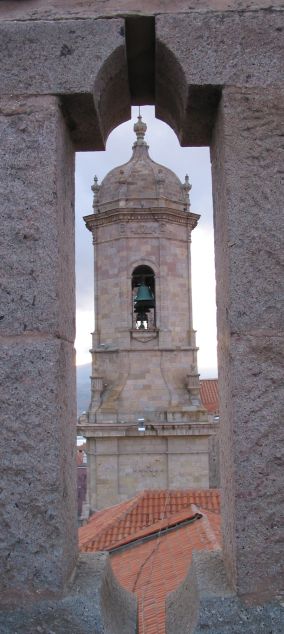
|
| Potosi, Bolivia |
Fortunately for us, all the troubles ended before our school did, so when classes were done we were free (and safe) to finally
see the country in which we had already spent a month.
Our fist stop was Potosi,
which bills itself (at 13,800 feet above sea level) as "The Highest City in the World." We arrived during the weekend celebration
of the "Day of the Dead:" Latin America's equivalent to Halloween. During this time, Bolivian Catholics visit their relatives'
graves in cemeteries for cleaning and upkeep and families who have lost a member over the past year open their homes to the
public for a type of wake (with food and about six different types of alcohol).
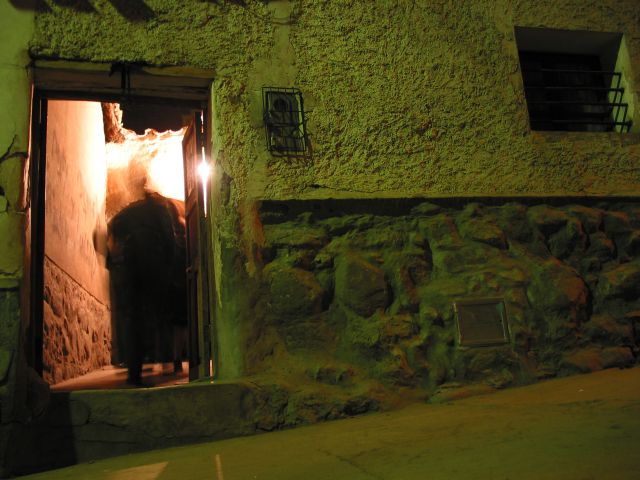
|
| Potosi, Bolivia |
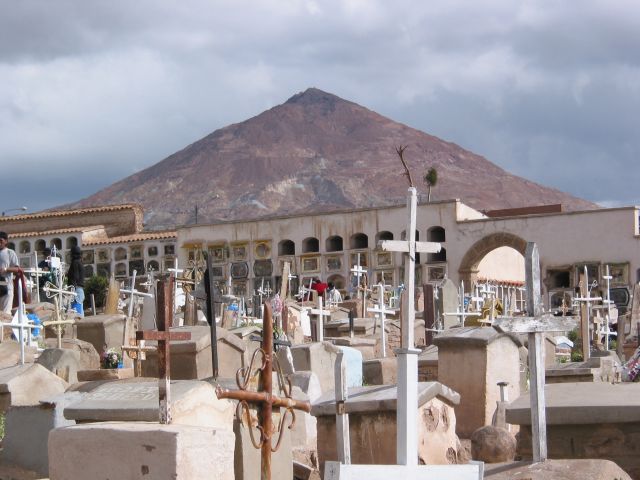
|
| Potosi, Bolivia |
Potosi's history is fascinating. The city is located where it is because silver was discovered during the 16th
century in the neighboring mountain (Cerro Rico, or Rich Mountain). The Spanish
proceeded to fund much of their empire and many of their wars over the next few centuries with silver taken from Potosi. The
city itself grew to be as big as Madrid and London, and became one of the wealthiest in the world.
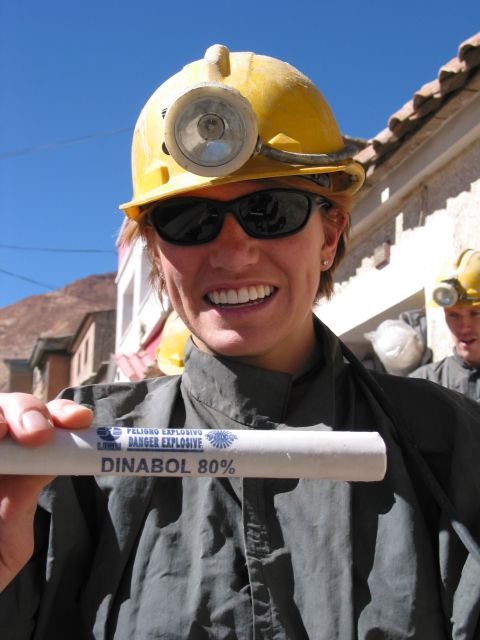
|
| Potosi, Bolivia |
The tragic part of the story is that, by some estimates, eight million miners (mostly Indians and African slaves) died
while working in the silver mines of Cerro Rico.
The silver eventually ran out, but today, thousands
of miners still enter the mines each day, using hand tools and traditional mining techniques to mine for bits of tin, copper
and other minerals. It is possible to tour the mines and meet these
miners ... and that is what we did, carrying with us gifts of coca leaves and dynamite.
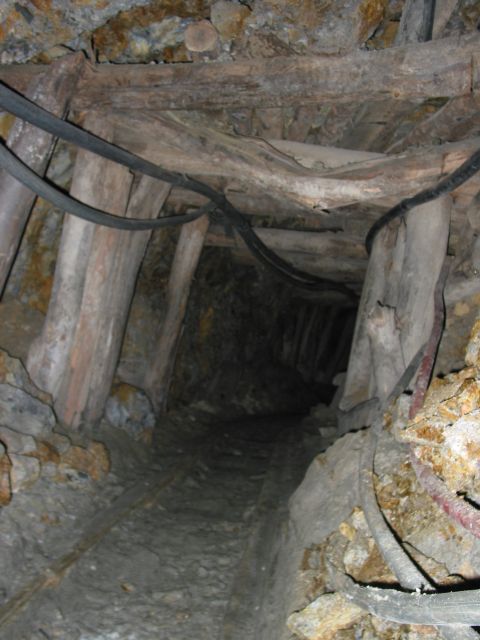
|
| Potosi, Bolivia |
The altitude is high
(more than 14,000 feet), there is little fresh air, it is cramped, extremely hot, and thoroughly exhausting ... and that's
just taking the tour ... it is impossible to imagine working there.
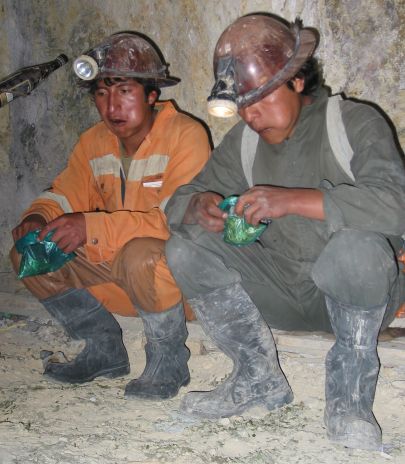
|
| Potosi, Bolivia |
Even today, the average life expectancy of a miner once they start working in the mines is just ten years. They sustain
themselves during their eight hour shift in the mines, not by eating, but by chewing coca leaves non-stop. The entire experience
was an unforgettable one (and one, like many others on the trip, where we found ourselves saying "they would never let you do this back home!").
CURIOUS ABOUT CONDORS
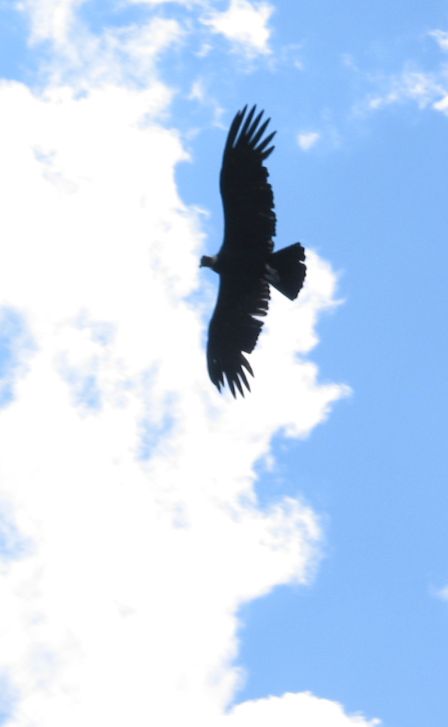
|
| Samaipata, Bolivia |
We headed next to the small town of Samaipata (which translates in the local Indian language to "the altitude to rest,"
which, at about 5,000 feet lower than Potosi, was true). The highlight there was
a one-day trek into the hills to spy on some condors. The local guides in Samaipata had just investigated the presence of
the condors two weeks before and we became the first ever paying tourists to take a guide up there.
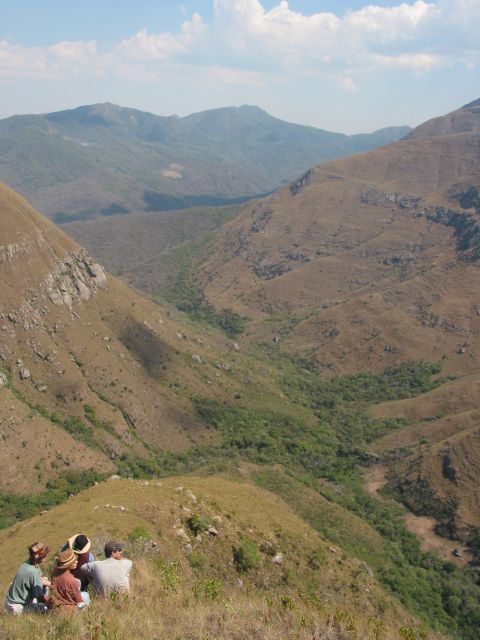
|
| Samaipata, Bolivia |
After a two hour drive, and a two and half hour hike, we spent the next three hours watching condors (the largest land bird
in the world ... with a wingspan of up to ten feet) fly above, below, and all around the cliff edge where we sat. Some of
them, perhaps as curious about us as we were about them, swooped down to just ten feet above our heads.
Another hike brought us to a forest of giant fern trees, where we enjoyed
swinging from some jungle vines a la Tarzan (and Jane).
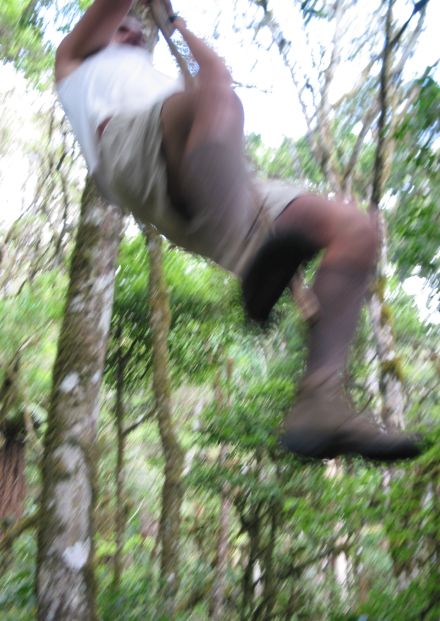
|
| Samaipata, Bolivia |
"WAITER, OXYGEN PLEASE!"
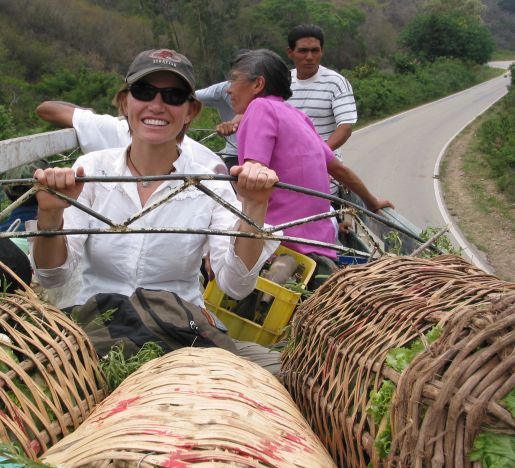
|
| Santa Cruz, Bolivia |
The road system
in Bolivia is not that great, so it takes quite a bit of time to get from one place to another. After Samaipata, it was two
hours in a vegetable truck (atop baskets of lettuce, it was perhaps our most comfortable ride), then eighteen hours on to
La Paz.
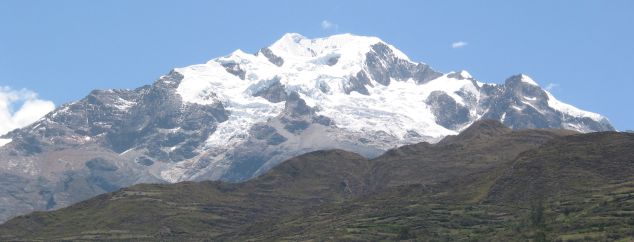
|
| Sorata, Bolivia |
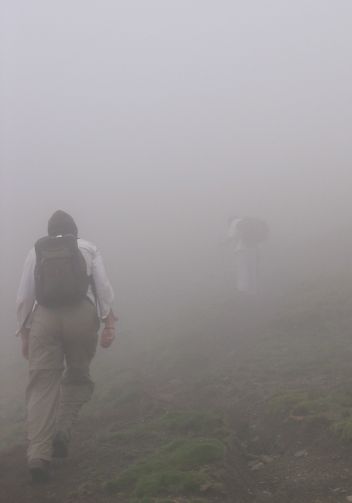
|
| Sorata, Bolivia |
We spent very little time there before heading into the mountains. From the mountain village of Sorata we took a three-day
trek into the Andes up the west side of one of Bolivia's highest mountains, Illampu.
It was just the two of us, our guide, Vincente, his seven year old brother, Alex, and "Macho the Mule." It took us two days
to reach a glacial lake at an altitude of 16,800 feet. The air was quite thin, and the two of us hadn't exactly been "working
out" on the road ... so we both just managed to huff and puff our way up there. The views, when not lost in the clouds,
were spectacular. Of the many sunsets we have watched over the past year, the one on the first night of the trek will probably
stay with us more than any other.
THE CURSE OF COPACABANA
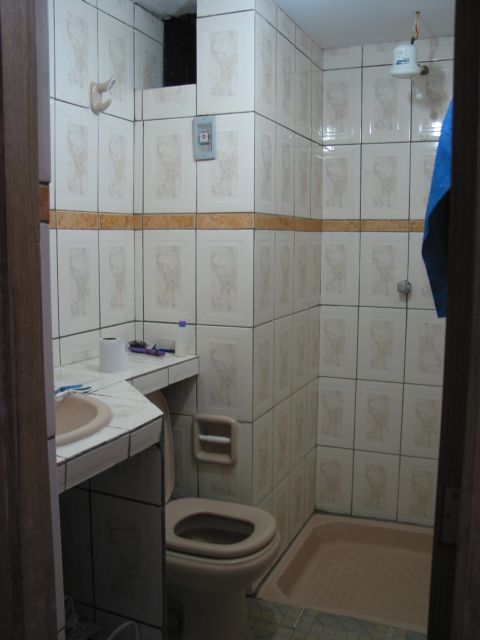
|
| Copacabana, Bolivia |
We had it all planned out. Our last week on the road would be spent on the shores of Lake Titicaca in the town of Copacabana.
We would rest, relax, maybe go for a hike or two, maybe visit the Island of the Sun.
The travel gods, though, didn't like our plan. They realized that we were about
to go home after a year on the road without having really had to deal with intestinal problems. They took care of that. We
think their weapon may have been the trout that Lake Titicaca is famous for.
Our room had a nice view of the lake. That was about all we saw of it. Fortunately, we discovered the Cipro in our
medicine bag just in time for the bus ride back to La Paz.
HOME FOR THE HOLIDAY
We had always planned on a year on the road, but had never given ourselves a firm date to return. Sometime in
October we came up with the idea of surprising Karen's parents for Thanksgiving.
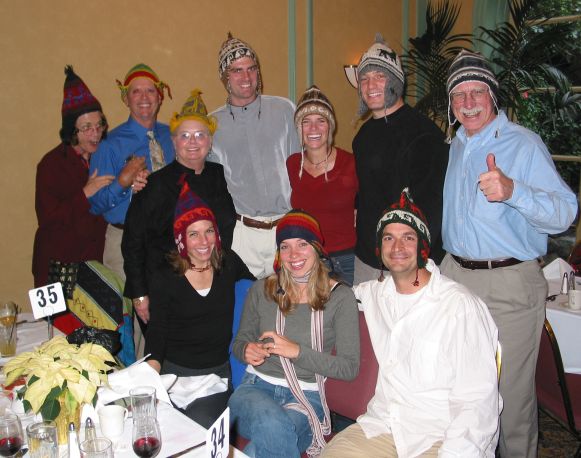
|
| San Francisco, California |
So, without letting anyone know, we flew back in time to walk (with packs on) into the dining room at the Cantebury Hotel
in San Francisco where a dozen member of the extended Crocker family had gathered to celebrate.
We thought that would be a good way, and a good time, to end The Enchilada. So, at 11:50 am PT on Thanksgiving
Day, November 27, 2003, The Enchilada ended.
South America Pretty Pictures

|
| Samaipata, Bolivia |
All photographs Copyright Garvin and Karen Snell 2004
|
